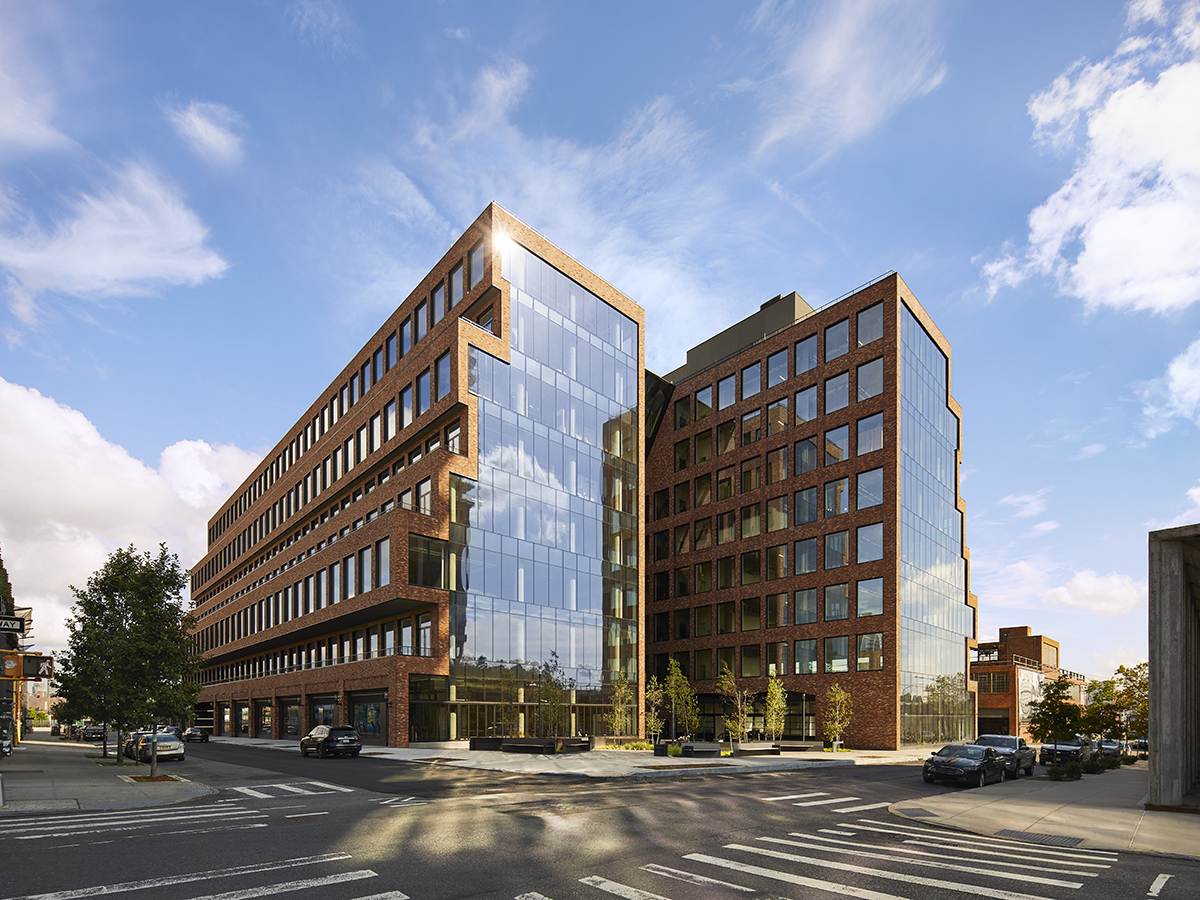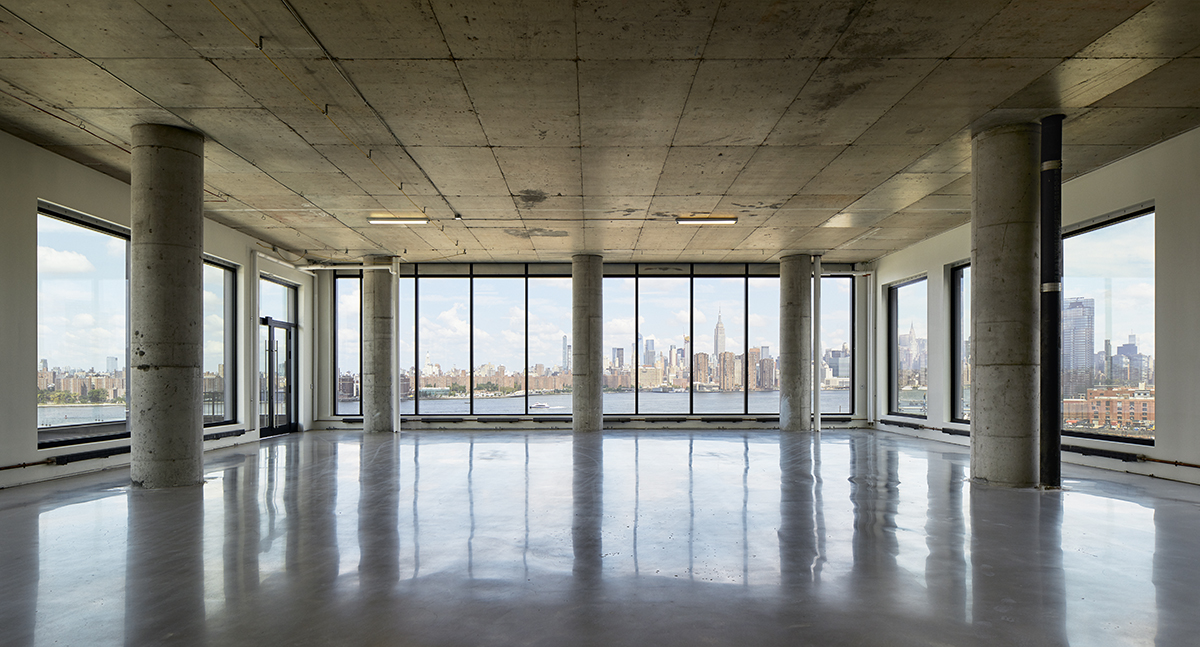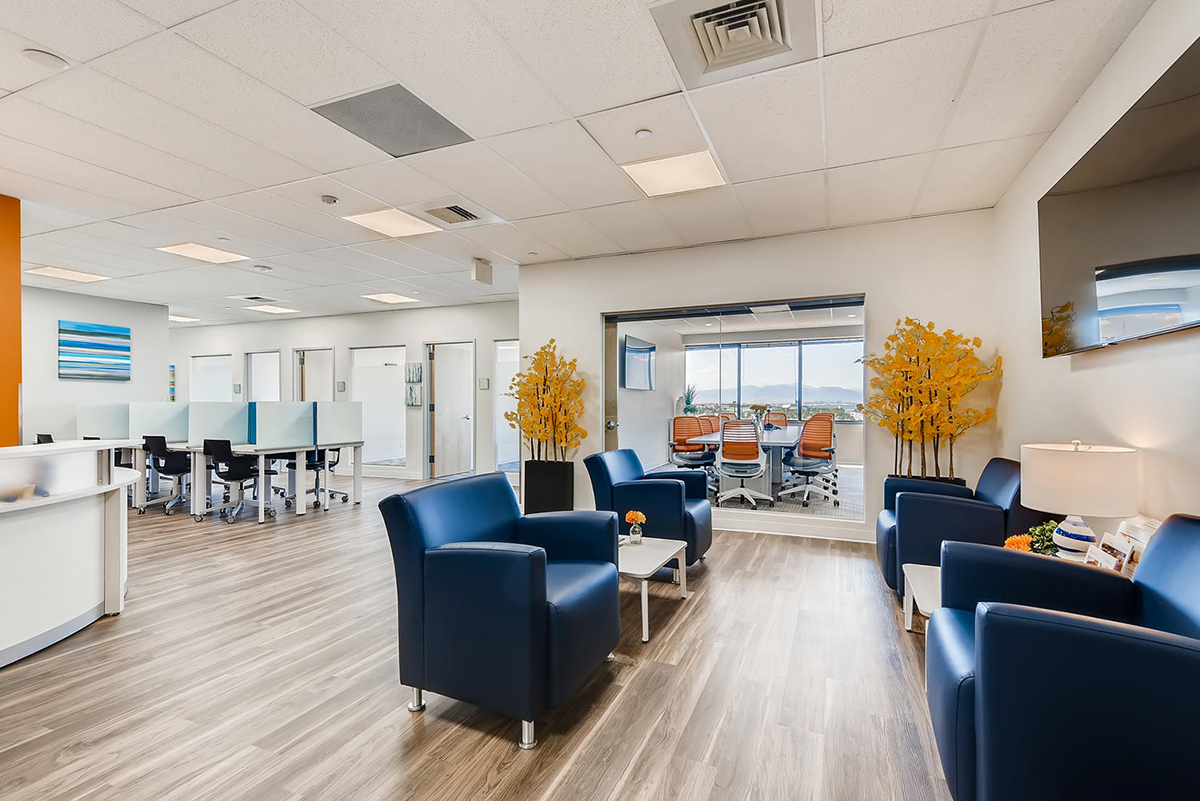Taking Stock of Office’s Future
The industry is learning new rules as virus concerns keep employees away from downtown desks.
Uncertainty reigns as the office sector continues to grapple with severe and lasting disruption nine months into the COVID-19 crisis. The emergency adoption of remote work policies in March has turned into a semipermanent status quo, and the biggest issue confronting the industry now is whether and how millions of empty desks across the U.S. will be reoccupied.
According to access control data from Kastle Systems, office usage across 10 major metros averaged only 27 percent as of Nov. 10. Dallas topped the list at 42.2 percent, while the New York metro, which was hit hardest by the pandemic, stood at just 17.3 percent. By contrast, average occupancy hovered above 97 percent in early March.
READ ALSO: Adopting the Proworking Approach in 2020

Designed by Hollwich Kushner with Gensler as the design development architect, Brooklyn’s 25 Kent features a half-million square feet of office space across an entire city block. Image by Ty Cole
Most companies that occupy Class A office buildings in major cities have learned that large portions of their workforce can work from home more effectively than expected, noted John Sullivan, U.S. chair & global co-chair of DLA Piper’s real estate practice. This has prompted a rethink of long-term space needs in many industries.
“But then counterbalancing that, you’ve got the fact that people are probably going to want to have more square feet per person in office buildings—the exact opposite of the trend pre-pandemic, when there was so much emphasis on open space and bench seating,” he added.
Some large employers are eager to bring their teams back, such as JPMorgan Chase & Co., which reportedly cited a drop in productivity among work-from-home employees. In an interview with the Wall Street Journal, Netflix CEO Reed Hastings said he saw no positives to remote work and that he intends to send the company’s 8,600 employees back to the office after a coronavirus vaccine is approved.
“No one expected the pause would be this long,” said Jeff Fronek, vice president & director of investments for Rubenstein Partners, a Philadelphia-based real estate investment adviser. “Companies in the face of uncertainty are hesitant to make long-term decisions.”

Developers Rubenstein Partners and Heritage Equity Partners intend to fill the waterfront 25 Kent in Brooklyn with creative-driven tenants. Image by Ty Cole
Keeping it flexible
Among office tenants whose leases are up for renewal, a growing preference for flexibility and shorter terms is becoming evident. Brokerage firm Colliers calculated that the average lease term for large deals—100,000 square feet or more—in New York City was nearly 14 years in 2019. In the first nine months of 2020, that term compressed to slightly more than 10 years.
“There was an alignment of interests,” noted Michael Cohen, president of Colliers’ New York tri-state region, pointing out that landlords are hoping that a five-year lease will take them over the COVID-19 slump, while tenants are trying to avoid making long-term commitments. “We’re seeing not just five-year leases but one, two and everything in between.”
Office owners, managers, developers and designers are also rethinking the types of space they are providing to tenants. “In our opinion, the way that office users are acting and what is important to them is changing significantly,” said Fronek.
The executive believes that there will be a greater emphasis on making commuting easier, relying less on public transportation, improving safety, health and wellness in the workplace and boosting outdoor amenity space. Reduced verticality may also become a selling point for new buildings amid worries about viral transmission in elevators.
READ ALSO: ULI, EY Predict ‘Ecosystem’ of Workplaces
In that respect, “groundscraper” buildings such as 25 Kent, Rubenstein’s eight-story, glass-and-brick development in the Williamsburg neighborhood of Brooklyn, will have advantages over 40-story towers in the near- to medium-term, Fronek added. Developed in partnership with Heritage Equity Partners, the 500,000-square-foot office and manufacturing project targets creative-industry tenants such as fashion brand Kith, which is relocating its New York City operations from Manhattan to the waterfront property.

Office usage remains below one-fifth in the New York metro area, according to data from Kastle Systems, after the coronavirus crisis emptied out the city’s once-busy streets, such as Madison Avenue in midtown Manhattan. Image by Greg Isaacson
“We’re marketing the space but sort of doing it in a non-tone-deaf manner,” Fronek said. “You have to show tenants that you understand what they’re going through.”
For the time being, filling up existing offices will take priority over building new ones. According to a survey in October by Associated General Contractors, 75 percent of commercial contractors said their projects have been canceled or postponed during the pandemic.
“It is tough to finance new office development in this environment unless it is preleased to creditworthy tenants over the long term,” noted Shaunak Tanna, head of structured investments at Basis Investment Group, a commercial real estate investment manager.
Demand for quality office space and investor demand for yield will keep the sector from going the way of retail, Tanna added, pointing to major transactions in Manhattan in recent months, such as Facebook’s 730,000-square-foot lease with Vornado Realty Trust and SL Green’s pending $952.5 million sale of 410 10th Ave., a redevelopment project in the Hudson Yards neighborhood.
There is other evidence that the appetite for offices remains strong. A recent study commissioned by the Building Owners and Managers Association International, Yardi Systems Inc. and Brightline Strategies found that 74 percent of tenant decision-makers nationwide believe that their in-person office space is vital to conducting a successful business or operation.
Other data from the survey suggests that most decision-makers are personally comfortable with returning to the office, and nearly half would be more likely to renew their leases based on their landlord or property manager’s response to the coronavirus.
Closer to home
While downtown towers continue to struggle with low physical occupancy, suburban office markets are expected to recover faster, according to a recent report by CBRE. The brokerage does not see a major tenant migration to the suburbs at this time, but disruptions to mass transit caused more severe harm to central business districts than to their suburban counterparts.

“Many of our locations are already at pre-COVID levels in terms of revenue,” said Office Evolution Founder & CEO Mark Hemmeter. The coworking franchiser continues to expand in suburbs and small towns, such as Northglenn, Colo., north of Denver. Image courtesy of Office Evolution
The suburban vacancy rate, though elevated, is projected to remain some 3.7 percentage points below its post-Great Financial Crisis peak, according to CBRE. Office market fundamentals should stabilize next year, the brokerage predicted, but logistical barriers and a proliferation of office supply will constrain recovery in downtown areas.
Suburban-focused coworking firms that offer private workspaces close to home could emerge as a beneficiary of the new environment. Office Evolution, the largest coworking franchiser in the U.S., is an intriguing case study. The Colorado-based company, which has 72 locations open throughout the country, is expanding in markets such as Atlanta, where it sees growing demand for flexible offices driven by small- to medium-sized firms.
“It’s very different than commuting to a WeWork in downtown Manhattan on the subway and dealing with all this stuff,” said Mark Hemmeter, Office Evolution’s founder & CEO. “We’re around the block, you jump in your car and walk in. The point is that people kept using us all the time because we were a way to get out of the house and go into a private office but feel safe at the same time.”








You must be logged in to post a comment.